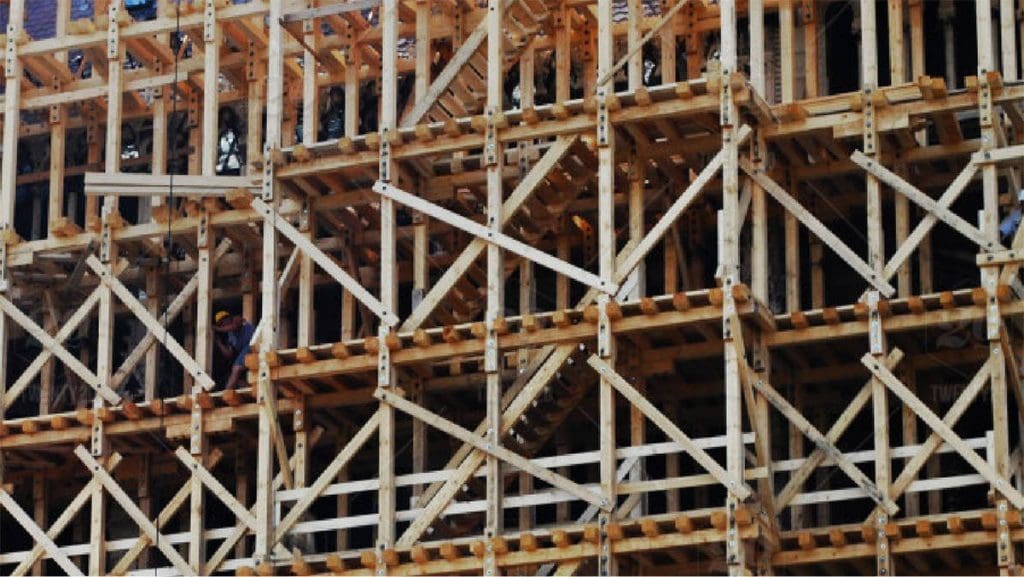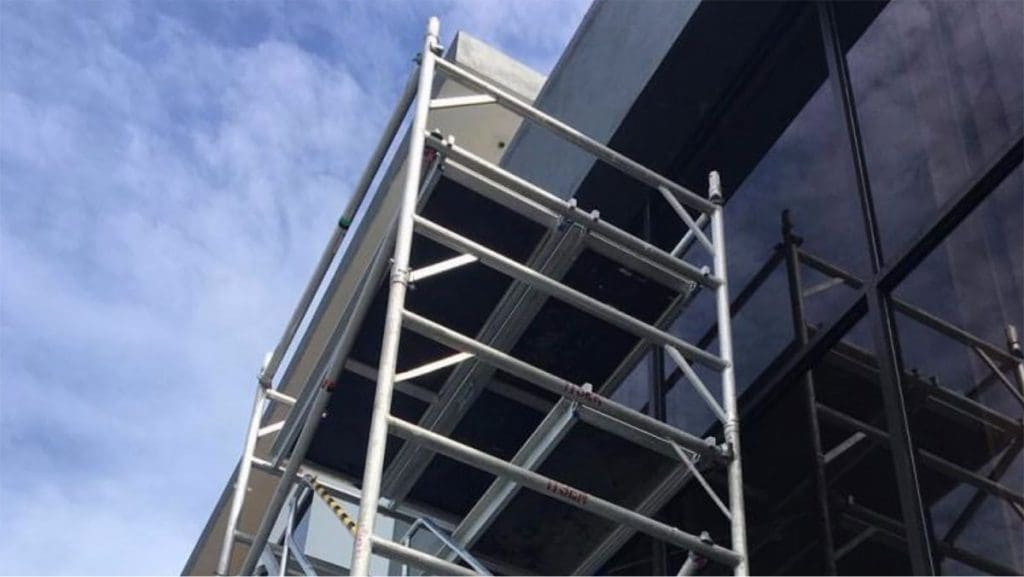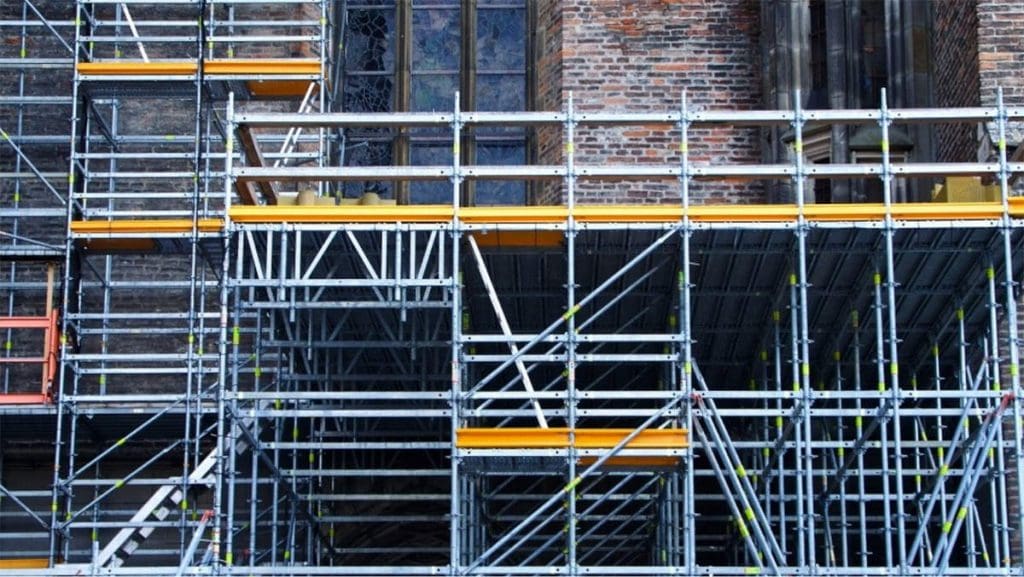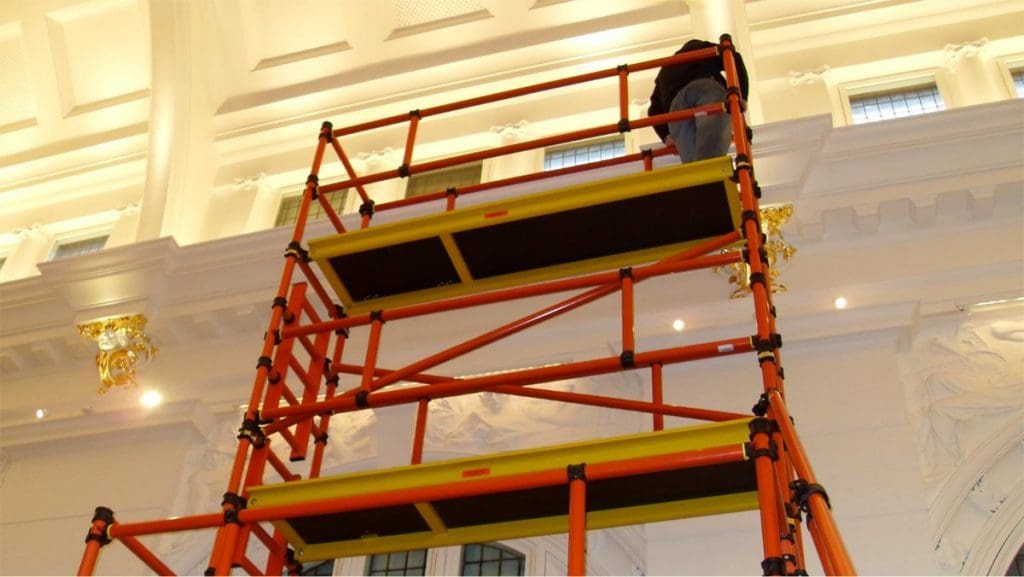The Four Types of Scaffolding Materials
Scaffolding is a crucial investment in construction. While it costs time and money, it allows workers to work efficiently and safely throughout a project. Therefore, it’s important to consider the most suitable type of material for your scaffolding. Here are all four materials that are used to make scaffolding.
Wood

Wood was the most common scaffolding material up until the 1920s, but it has since been replaced by inorganic materials such as aluminum and steel.
The only scaffolding component that is still made out of timber is the working platform or board. Timber from fir or pine wood is a great material for boards as it’s lightweight, fairly durable, and easy to install. It also tends to be low in cost, especially in locations where it’s easily accessible.
However, timber is not as strong as metal. Thus, it’s not suitable for platforms that need to carry extra heavy equipment. It’s also high-maintenance, as it’s prone to rot, cracks, and even pests. As an organic material, timber includes the risk of shrinking, swelling, or bending when exposed to different climate conditions. Most of all, it poses an environmental implication due to the continuous deforestation needed to supply it. All in all, wood isn’t as strong, durable, and adaptable as metal, which are some of the reasons why it’s less utilized today.
Even so, there is one type of wooden material that is still widely used to this day: bamboo. It’s commonly seen in Asia, especially in countries like Hong Kong and Vietnam because it’s readily available, affordable, versatile, and appreciated as part of a cultural heritage.
Aluminum

Aluminum scaffolding is one of the newest types of scaffolding material, known to be versatile and low maintenance.
Its most notable feature is being lightweight. Aluminum is much lighter than steel, which makes it an easier scaffolding to handle. It requires less time and energy for constructors to transport, erect, and dismantle. This means it’s a cost-effective material as it reduces transportation and labor costs. Because of this, it’s often used in Scandinavia and Northern Europe where labor is very expensive.
It’s also a corrosion-resistant material. When exposed to air, it naturally forms a protective layer of aluminum oxide, which is a protective membrane that is highly resistant to any weather condition.
On the flip side, it has reduced weight stability due to its lightweight nature. Therefore, it’s not recommended for tall staging that requires weighted stability. It’s also an expensive investment, as aluminum itself is twice as expensive as steel.
Considering these advantages and disadvantages, this material is suitable for suspended scaffolding, which requires frequent mobilization and a lighter material to remain suspended. It’s also becoming a popular choice for pump jacks.

Steel

Steel is the most common, most relied-upon material in the modern scaffolding industry.
The biggest advantage of steel is that it offers great strength. It can support very heavy loads, so it’s suitable for tasks that require transporting heavy equipment and supplies. While it’s strong, it’s also flexible. It can be manufactured to fit any shape of structure, and its elasticity helps prevent cracks.
Being three times heavier than aluminum, steel is a great option for taller structures. It provides structural strength for the scaffold, and is able to withstand the strongest winds even at tall heights when properly secured with ties and bracing.
However, the downside of steel scaffolding is that it’s susceptible to corrosion when exposed to humidity for long periods of time. To prevent this, the steel used in scaffolding is often stainless, painted, or galvanized steel. But even then, it’s still more likely to corrode and rust compared to aluminum.
Another drawback is its weight. While the heavy material provides stability to tall structures, it also poses a challenge for scaffolders to transport and erect it. But several companies have addressed this issue by manufacturing lighter steel scaffolding, such as Layher Lightweight.
Due to its versatility, steel is used in many components and types of scaffolding. One type of scaffolding that is known to be the staple steel scaffolding is tube and clamp.
Most types of scaffolding come in both steel and aluminum options depending on the brand (or a mixture of steel parts and aluminum parts), so choosing the best metal material truly depends on the project’s requirements. If you’re looking for speed and ease at a medium height, go for aluminum. If you need heavy-duty support and tall staging, opt for steel.
Fiberglass

Fiberglass, a type of fiber-reinforced plastic, is a newer, lesser known type of material used in the scaffolding industry. It’s used for filament-wound scaffolding tubes, which are sometimes referred to as ‘composite scaffold tubes.’
The reason why this material is lesser known is that it’s only used for scaffolding tubes, and reserved for special circumstances where there is a risk from live overhead electric cables.
As the usage suggests, fiberglass has excellent insulating properties and high resistance to fire, which makes it a wise choice for construction projects with the risk of electrocution. The downside is that it’s much more expensive than steel tubes.